#1980's cgi
Text
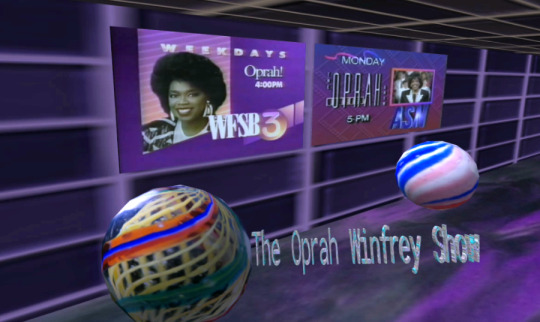
#the oprah winfrey show#1980's cgi#nostalgia#old school#vaporwave#prisma 3d#retro misc#oprah winfrey
20 notes
·
View notes
Photo
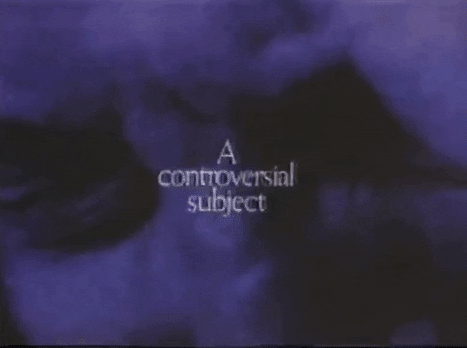
#1980s#80's#fm radio#cgi#NEON#new retro wave#VHS#vhs aesthetic#crt#Memories#the eighties#80s aesthetic
439 notes
·
View notes
Text
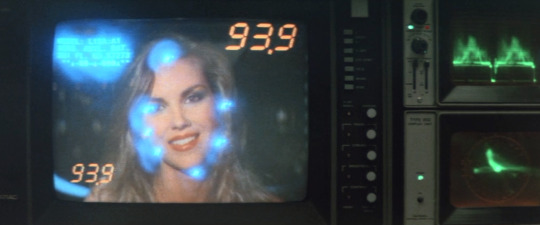
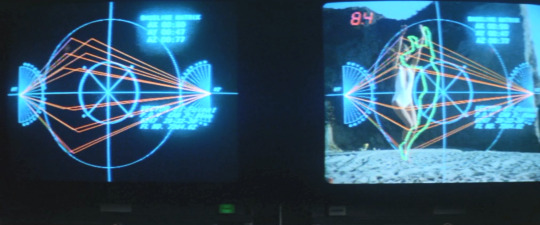

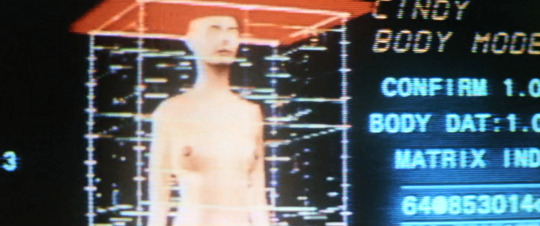
Looker (1981)
#looker#my posts#movie#film#80s movies#sci fi#horror#sci fi horror#thriller#michael crichton#80s graphics#vaporaesthetic#vaporwave#a e s t h e t i c#cult movies#screencaps#80s#1980s#80s cgi#grindhouse#exploitation film#exploitation movie
19 notes
·
View notes
Text
If they make a Dunk & Egg show, I think it would be neat if it had a 1980's or 1990's flare and style to it. Everything from cinematography, costumes, settings, lighting, and decor. Practical effects??? I miss those, too. (And also, I want to bring the grainy aesthetic back..) D&E is such a unique story within ASoIaF, I think it would be neat if we got something different than HotD and GoT. I'm tired of the dim lighting and lack of flare, and imo, it wouldn't fit the story of D&E, which is an adventure and mostly optimistic.
The 80s: gives off a magical vibe, natural color palletes, beautifully flashy costumes. Editing was much better than it is today. There's too much overediting in films today (American films at least), and the end result is a choppy story. Jacki Chan once touched on this himself. The use of practical effects. Sometimes, practical effects are more magical than CGI.
Excalibur (1981)


Dragonslayer (1981)


The NeverEnding Story (1984)


The 90s: *STUNNINGLY SOFT VISUALS*, the lighting is a little brighter, slightly less grainy than the 80s, excellent cinematography (wide shots are *chefs kiss*), there was a healthy mix of CGI and practical effects, the optimism in story-telling, has a romantic style to it.
Jurassic Park (1993)


The Mummy (1999)
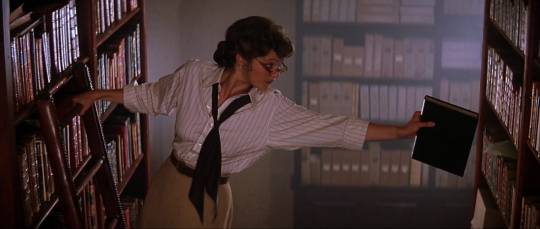
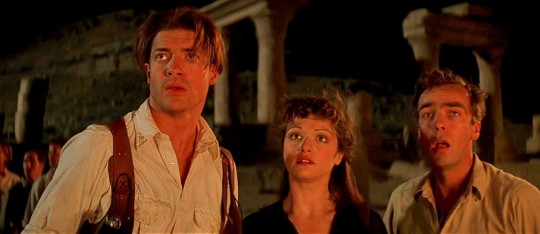
I think I'd opt for a 90s film style for D&E. Soft, romantic, and adventurous with a certain irony in the humor.
130 notes
·
View notes
Text
I miss these kind of movies, where there was no cgi (or rarely) and no heavy makeup to make the actors or actress look younger or older and no constant music. Who else love these old classics whenever they were done by disney, universal or bbc. 1st image: Narnia (1980-1990)

2nd image:Goodnight Mister Tom (1998)

3.The Three Lives of Thomaslina (1963) (it;s one of disney movies that they have forgotten about, it should be on disney plus at least since it's such a sad but beautiful tale, and it has the two kids from Mary Poppins)

4. Greyfriars Bobby (1961)
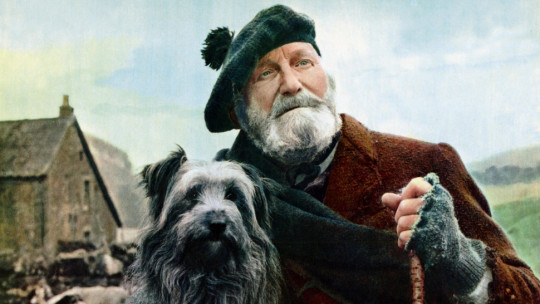
5.A little Princess (1995)
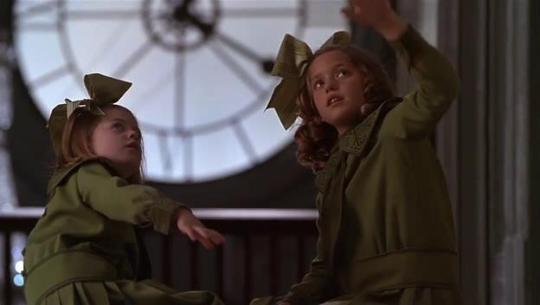
6.pippin long stocking (1969)

7.pollyanna (1990)

#disney movies#movies#bbc narnia#bcc#bcc movies#pollyanna#pippi longstocking#goodnight mister tom#narnia#a little princess#greyfriarsbobby#old movies#pictures of movies#childhood memories#childhood#childhood nostalgia#childhood movies#film
14 notes
·
View notes
Text

INDIANA JONES AND THE DIAL OF DESTINY (2023) - A local carpenter and weed dealer who transitioned into bit-part acting in the 60s, Harrison Ford is now 80 years old, and still somehow unretired. Indiana Jones, meanwhile, is supposed to be about seventy. The equivalent would be if Indy's father, Sean Connery, was still playing James Bond in 2010. I'd say that Ford (and by extension all Boomers and above) should step aside and let someone like Chris Pine, Ryan Gosling or James Marsden make a movie like this, but we'd probably get Chris Pratt, Jared Leto, or Shia LeBoeuf instead, so I'll just have to let it slide. This time.
With a $294.7 million budget (Raiders of the Lost Ark cost 20 million in 1980), a large amount of CGI has been employed, along with green screen, stunt doubling, deepfaking, de-aging, and Phoebe Waller-Bridge, to make it seem like Harrison Ford is still a viable action hero. To be clear, he absolutely is too old for this, and it is absolutely a bad idea to make this movie. The $185 million "Indiana Jones and the Kingdom of the Crystal Skull" was an equally bad idea back in 2008, and it has somehow been 15 years since then.
I don't know if it's elder abuse or simply audience abuse to keep making these, but in both cases, an aging Harrison Ford is more engaged and interested in this role onscreen than he is in just about any other. 1982's Blade Runner gave us Harrison Ford in his prime, sleepwalking, disinterested and sullen. Now in 2023, Ford is visibly too old to be doing this CGI superhero bullshit, in a sequel that is forty years too little and too late, but he's committed to the role enough that he just about gets it to work. After a tepic reception at Cannes, the film is getting very good reviews and buzz, so I'll be the one to break from the pack and say that it doesn't work for me. Oh, no one involved embarrasses him or herself. Under the circumstances, it's a miracle that the movie is as good as it is. It's a bad idea that just about justifies its own existence.
A small caveat here: There may have been something wrong with the sound setup at the theater where I saw this. I couldn't understand a word being said for large chunks of the runtime, starting with a chaotic sequence in Morocco. But I don't think I actually missed anything. Maybe the sound mixing is just like that, Chris Nolan style. The opening sequence, with a younger Ford de-aged via CGI, was very dark and murky visually. In Imax, I could see the pixels on the screen, especially the bright white on black titles.
But I think the key problem for me is that I guess I don't like James Mangold as the director for this sort of thing. I haven't seen his full filmography, and he's clearly well regarded. But I have seen his dreary films about an aging Wolverine. 2013's "The Wolverine" sees the Hugh Jackman X-Men character travel to Japan and murder every single person he meets with his adamantium claws. At one point the female sidekick is mulching guys into paste with a snowplow. In 2017's Logan, he's older and unhappy about the situation, as he gets into danger with a child. These were, for me, examples of taking a superhero film way too seriously, as if gunning for the Oscar with a script that doesn't stand up to thinking about it for more than a minute or so. You wouldn't see a movie about Superman murdering a few thousand Japanese guys, because it's not a fair fight. "The Wolverine" (2013) wounds Logan just enough that he can plausibly act like the underdog, but he's a more-or-less immortal killing machine with knives coming out of his wrists.
It's hard to make a good film, and these films are polished, stylish, action-packed and memorable in many ways. But they also leave a bad taste in my mouth, comparable to the work of Zack Snyder. There's a lack of humanity to them. I could have predicted that in this Indiana Jones movie, Indy would constantly be murdering people, and that people would constantly be getting into accidents that kill them in horrific implied ways, and that the bad guys would kill any notable character that the plot isn't relying on.
That is what you get here, and admittedly it gives the film a certain energy. You don't get the sense that this is the cleaned-up Disney version of Indiana Jones, where everything is censored. You feel the danger. But it also forces me to be the party pooper and point out that this film lacks the magic that Steven Spielberg and George Lucas brought to the property. Steven Spielberg is hard to replace. He is the most famous and beloved film director of our time, and he has always brought an aura of wonder to the screen that other filmmakers can't really imitate … with only occasional exceptions like the uncanny valley animated "Tintin" film.
It's unfair to expect James Mangold to fully replace Spielberg, and under the circumstances I'm not surprised they went with a director who presumably considers his work to be Very Important Cinema. Mangold manages to deliver lots of action, and make it feel like "an Indiana Jones movie," when forty years later it probably shouldn't. But it's just not the same, for a lot of reasons.
Spielberg's Raiders of the Lost Ark (1981) is an extremely tight two hours which works like clockwork. There's a lot of wit and character to it, but it's that precision filmmaking which makes many people call it "a perfect film." It doesn't slow down very often. It's always doing something interesting visually, and always moving forward. Every Indiana Jones film ever since has tried to recapture that.
We have a problem here, which is that an eighty (or seventy) year old Indiana Jones is more of a character role, who we could expect to talk about what he's learned over the years. And an Indiana Jones movie cannot slow down for something like that, even for a second. Or at least this movie can't. The script is also not funny enough to lend much character to the proceedings, so we don't get much sense of who these people are as they're speeding around on green screens at a hundred miles per hour. The end product is chaotic, often to the point of incoherence. Everyone is almost always moving at great speed, for reasons which aren't always adequately set up. To repeat, they're moving at great speed whether or not there is a good reason for them to be doing so. They are often on green screen, or visibly stunt doubled, and one of them is eighty years old.
There's also a lot of fighting on the tops of trains and from moving vehicles. Why do the bad guys take a wounded Indy along with them as they enact their entire plan? As far as I can tell, no reason is given, except that it's a movie and Indiana Jones needs to be there for it. Helena also manages to board the plane while it's in flight, and Teddy manages to get another plane going, for the reason that these are the characters who are in the film, and they need to be there for the end of it.
The script contradicts itself constantly, and feels like bits of different drafts were combined with one another randomly. Why is Indiana Jones teaching in July, preparing his students for mid-terms or finals, then also retiring in July on the same day? Why is he coincidentally teaching his disinterested class about the same subject that the film is about, when it's a touchy subject which secretly tore entire families apart in the film's backstory? Why do we keep meeting his close friends, that he's apparently spent decades with, for about two lines of dialogue before they get shot?
The result lacks character. As with the Crystal Skull film, stunt casting is used in place of giving us scenes that show who these characters are. I can believe that Antonio Banderas is a salty old scuba diver who has had many good times with Indiana Jones over the years. I can believe that because he's Antonio Banderas, but the film expects that to be enough for us, and gives him very little of interest to do. And Toby Jones' character, an academic who's not cut out for being an action hero, would be very uninteresting if it wasn't played by a character actor like Toby Jones. (Crystal Skull pulled similar shenanigans with Jim Broadbent, John Hurt, Ray Winstone, and Cate Blanchett.)
John Rhys-Davies shows up briefly as the returning character of Sallah, looking every day of his 79 years of age. I expect they wanted to keep any action with Rhys-Davies to a minimum, so we find him appearing in the movie for no real reason, except that this is an Indiana Jones movie and therefore he ought to be in it. I agree with that, but bringing these characters back one last time has an eerie David Lynch quality about it.
Mads Mikkelsen plays the memorable (if very standard) villain, a semi-retired Nazi called Dr. Voller. It's ideal casting, although it raises questions to have the 57-year-old actor playing the part in both 1944 and 1969. He is noticeably de-aged in the 1944 scenes, with a few less lines and wrinkles, but Harrison Ford manages to age 35 years in the same time (ten more than he ought to). A whole lot of CGI is used to give Indiana Jones one more adventure in 1944, and it's technically impressive, if still a bit noticeable and distracting. Toward the end of the sequence, a little too much of it takes place in the dark - not to hide the quality of the CGI but because movies tend to be too dark now.
Boyd Holbrook is memorable as a trigger-happy American who gives off Neo-Nazi vibes which aren't deeply explored. Ethann Isidore plays the sidekick, a thieving street rat kid called Teddy. Shaunette Renee Wilson plays a CIA agent, I think. Olivier Richters plays the guy who is 7 foot two. You know, I'm not sure that an 80 year old Indy and a 16 year old Teddy are really a match for this guy.
It is getting into spoiler territory to say that Karen Allen appears as Marion, although that won't surprise anyone either. It is definitely getting into spoiler territory to say what became of their relationship after the Crystal Skull film, and these are some of the only moments in the film where Harrison Ford really gets to act and lay out his character's backstory. I wish we'd gotten more of this. I've seen complaints about this storyline, saying it robs the character of a lot of his charm, and is too similar to plotlines in the Star Wars sequels, and the Blade Runner sequel. I can see that, but when sequels come this late, they really have to be about regret, and this storyline works better than anything else in the film. Although I couldn't help but think that this elderly couple began - in Raiders - with Marion punching her former Professor, who had clearly had an inappropriate relationship with her when she was a minor. The 30s were a different time, and so were the 80s. Marion's role is also very small here. It is crucial that she be present, but the film is not interested in exploring her character any more deeply than that.
We don't get Ke Huy Quan's Short Round, as his career only picked up this past year with a memorable role in Everything Everywhere All at Once. It's easy to imagine the character showing up in either Crystal Skull or this film as one of the leads, rather than these new characters, but that wasn't something they considered writing for the slightly embarrassing kid sidekick from "Temple of Doom." And speaking of embarrassing …
The "Crystal Skull" character of Mutt, played by Shia LeBoeuf, was covered in the press at the time as a character who could replace Harrison Ford in the Indiana Jones films, played by an up and coming young actor whose career was given a huge boost by the Spielberg seal of approval here, leading to the equally annoying character of Sam Witwicky in the Michael Bay Transformers films (the first in 2007). And yes, in the actual film, Shia LeBoeuf is deeply uncool and mostly just a nuisance.
Pretty much every male nerd of a certain age wanted, and still wants, to be "cool" like Indiana Jones. Any internet reviewer, of the Angry Video Game Nerd variety, will put on a complete Indiana Jones cosplay for their review of this film, as they did with Crystal Skull, and they'll think they're being slick with it. The leather jacket, the shirt, the hat, the whip. All clothing items that they already, apparently, had. Nobody wanted to be Shia LeBoeuf's Mutt Williams. He's got a 50s greaser look which doesn't suit him, making him look less like Marlon Brando than like Michael Cera's Wally Brando, from Twin Peaks. Indeed Cera might have been better in the role. Shia is a very reactive actor, and could theoretically have pulled off a Michael J. Fox type role which required that. But planting the idea that he could replace Indiana Jones nearly ruined his career here, because he very clearly doesn't have the necessary swagger. The movie itself even confirms this. In the end, Mutt picks up Indy's trademark hat, and Indy grabs it right back from him. This can be seen as a metaphor for how this series has gone, and also for how the Boomer generation, and older folks who came of age in the 60s and 70s, have refused to retire and let the younger generation take over for them.
Okay, so maybe Shia LeBoeuf was never going to replace Indiana Jones, a character originally offered to the hairy-chested Tom Selleck. But perhaps another actor could have. Harrison Ford seems iconic and irreplaceable now, but in the 70s he was a weed dealer and carpenter who did bit parts on the side. While it's fun to see Indiana Jones come back one last time, it's also a metaphor for Hollywood leaning back on successes from over four decades ago, and refusing to create anything truly new. Shia was set up to fail, because he looks and acts young in a movie that sees his youth as embarrassing. It didn't actually give us a "new Indiana Jones type," and Dial of Destiny doesn't either.
Shia LeBoeuf eventually left the Transformers franchise. We're told that he was killed off between films. And then there were the allegations, as his behavior, according to the newspapers, became ever stranger and more erratic. "FKA twigs Sues Shia LaBeouf, Citing ‘Relentless’ Abusive Relationship. The lawsuit, filed in Los Angeles by the musician, accuses the actor of sexual battery, assault and infliction of emotional distress."
Shia LeBoeuf does not appear in this film.
(ROT13 because of spoilers)
Guvf vf npghnyyl n znwbe cybg cbvag. Zhgg Jvyyvnzf, yvxr Cbbpuvr ba Gur Fvzcfbaf, qvrq ba gur jnl onpx gb uvf ubzr cynarg, be engure va Ivrganz. Vg vf Vaqvnan Wbarf' terngrfg erterg gung ur qvqa'g fgbc Zhgg sebz rayvfgvat, naq vg qrfgeblrq uvf zneevntr. Ur gryyf hf gung Znevba jnf ybfg va ure tevrs, ohg vg vf irel pyrne yngre ba gung Vaql jnf gur bar jub tbg ybfg. Ubjrire, gur cybg bs gur svyz nyfb tvirf Vaql gur pyrneyl-fgngrq bccbeghavgl, ivn gvzr geniry cbjref, gb vagresrer va gvzr naq fnir Zhgg sebz qlvat. Gur svyz arire fybjf qbja ybat rabhtu gb tvir Vaql gvzr gb npghnyyl qb guvf, ohg jr pbhyq nyfb pbapyhqr gung Vaql ernyvmrf gung ur unf gur cbjre gb oevat Zhgg onpx sebz gur qrnq, naq pubbfrf abg gb qb fb. Haqrefgnaqnoyr, unir n avpr qnl.
V ernyyl gubhtug jr'q trg gjb Vaqvnan Wbarfrf gubhtu. V gubhtug gung'f jul gurl jrer frggvat hc gur gvzr geniry ryrzrag naq gur qr-ntrq Vaql ng gur ortvaavat. V gubhtug gung jr jrer tbvat gb ybbc nebhaq naq trg zber jvgu obgu Vaqvrf. V jnf abg rkpvgrq nobhg jung jr npghnyyl tbg.
I have not yet mentioned the rest of the plot, which involves the Greek mathematician Archimedes and is stupid. At one point there is a dull scuba-diving sequence where Indy is attacked by equally dull CGI eels. At another point we get the welcome return of the red line on a map which marks which country Indiana Jones is going to next.
There's also the matter of Phoebe Waller-Bridge, who wrote and starred in Fleabag on the stage in 2013, and on television in 2016 and 2019. Her character is equal parts charismatic and off-putting, attractive and reprehensible. (Phoebe also appeared in "Broadchurch," contributed to "James Bond 007: No Time to Die" and created Crashing and Killing Eve.) Despite a strong outing in Fleabag, it took Lucasfilm some time to do anything interesting with her. Her voice role as feminist android L3-37 in "Solo: A Star Wars Story" (2018) is baffling. It may have made more sense before rewrites and reshoots replaced directors Lord & Miller with Ron Howard. But it also runs afoul of a recurring problem in Star Wars, which is that droids seem to be fully developed, intelligent, sentient beings, who are never treated as if they're deserving of human rights. Star Wars never deals with this in any meaningful way, and it's an exposed electrical wire that they often get tripped up on, especially in animated television shows like The Clone Wars.
Anyway, I think this movie, the Dial of Destiny, has a problem with women. There are a lot of characters in this movie that aren't deeply explored or explained, but none of them quite like Helena Shaw, played by Phoebe Waller-Bridge. Unless I missed something during all the dialogue I couldn't understand, this doesn't feel like an actual consistent character. It feels like several very different characters from several very different drafts of several very different movies, all stapled together more or less randomly.
The performance is fine - Phoebe Waller-Bridge is charismatic and delivers every line with a wink and a twinkle. Her character is also just deeply insane, and her motivations never make sense. She is also, I think, playing an entirely different character by the end of the film, who is a more traditional hero, and expecting us to believe that she's been playing that character the entire time. As with her character in Solo, this should probably be funny, but isn't, because it's not written to be funny or make very much sense. Helena is, depending on the scene, the puppetmaster in charge of the entire adventure, or coming along reluctantly and making it up as she goes. She is also, depending on the scene, only in it for the money, or very deeply invested in this academic mystery and adventure. She is ready to sell off the Dial of Destiny to pay off gambling debts, because it's either the most meaningful thing in the world to her, or not meaningful at all. Sometimes she's a straightforward hero, or sidekick to the hero. She is also just deeply insane and often untrustworthy, going goblin mode in a way that may have been funny or interesting in a different draft of this script.
It is likely, considering her repeated lines that she's "in it for the money," that they intended Helena to be similar to Harrison Ford as Han Solo. But I think this movie has a problem with women, and failed to write her as a complete person with motivations that make sense. There is one scene in Greece where, to test how a location echoes, Helena starts shout-singing Beethoven's Fifth. Phoebe plays this a little bit wacky, so this feels like the setup for some comedic banter, probably with Indy being annoyed by this. But he just goes along with it and does the same. Helena Shaw is an eccentric performance in search of a better script which would actually explain what she's doing, or make it funnier.
The character clearly has a sense of humor, and is carrying a lot of trauma, and has a lot going on in her backstory, and none of it matters. This could have been a journey where her character changes over the course of the adventure, and maybe they think that's what they accomplished here. It feels more, to me, like this is four different characters held together by one performance.
The character we get as a result is acceptable, and at least she doesn't have the weight of having to possibly replace Indiana Jones, which made Mutt Williams so worrying. But it's also a character delivered with a wink to the audience, and another wink to Indiana Jones himself, as if this is all one grand joke that we're all in on. At no point was I in on this joke, so that didn't work for me. Throughout the film she does things that could easily cause the death of the very elderly Indiana Jones, as well as herself, and it just never matters because this script was rewritten a thousand times and has inconsistent internal logic.
Early scenes in the film set Indy up as a man out of time in a changing world, an interesting character note which is largely forgotten once he puts that hat back on, something he only does because it's an Indiana Jones movie and that's what Indiana Jones wears. For all of the film's chaotic, frenetic action, it's at its best when it's about an old man complaining about his life. There's a brief scene where Indy complains to Helena about the state of his body, and this angle really is curiously underexplored in The Dial of Destiny. At 80 years old, Harrison Ford is not a young action hero. This has become, whether Lucasfilm likes it or not, a character actor part. Phoebe Waller-Bridge is also performing Helena as more of a character-actor part. So I think this could have been a better movie than it is if they stopped pretending that this is an Indiana Jones movie and let it go completely off the rails and become a disaster. Like when a Sam Raimi or David Lynch film loses interest in what it's supposed to be doing, and pursues something more nonsensical for awhile. I think that would be better than what we got. I don't think the Dial of Destiny is bad, but I question all of the cultural decisions that led it to be made in the first place.
Does Indiana Jones, even at eighty, deserve one last hurrah? Sure, but we all deserve one last hurrah and we don't usually get them. If you wanted to make this movie, the time to do so was in the 1980s, or 90s if Ford was interested then.
Indiana Jones and the Last Crusade came out in 1989. (Remember "It belongs in a museum!" "So do you!") It was intended as the last hurrah for an aging Indiana Jones, and we've now gotten three of those, which is more than the two movies that preceded it, both of which purport to be Indiana Jones' first adventure. If you take into account the Young Indiana Jones TV series, all of Indiana Jones' live action adventures are either his first ever adventure, or his last ever adventure. Sometimes they're both - Last Crusade has a Young Indiana Jones segment (the weakest part of the film), Dial of Destiny has a Relatively Young Indiana Jones segment, and The Young Indiana Jones has Indy as a one-eyed old man. Or at least it did; George Lucas has cut those scenes from re-releases. At least we get one episode in season 5 where a bearded 1993 Harrison Ford plays the saxophone.
That wasn't what we wanted either; we wanted Indiana Jones and the Fate of Atlantis in 1993. The Indiana Jones film series was based on older adventure movies whose influence is, I think, nowhere to be found in the new film. Those films were probably familiar to audiences in 1981 but unfamiliar to even the filmmakers in 2023. Enough time has passed that many other series trying to recapture the Indiana Jones formula have come and gone. We've had The Mummy series. We've had multiple Lara Croft Tomb Raiders. We've had multiple Scrooge McDucks. Everyone is trying to capture that sense of old-fashioned adventure with a little comedy, and they're usually better at the comedy than Dial of Destiny is.
Full disclosure: I don't think Indiana Jones and the Crystal Skull is as bad as its reputation, or at least I didn't when I saw it in theaters in 2008. I've not bothered with it since. As I recall, I was invited to see it in Los Angeles, with a friend from high school and his friend group. We couldn't all get tickets together, so I was separated. I was in either another row, or in another theater entirely. After the show, they greeted me with sarcastic feigned enthusiasm, saying "Indiana Jones and the Crystal Skull rocks!" and high-fiving me. I hadn't especially liked the film either, but soon realized that I'd made a complete fool of myself, in their eyes, by having any opinion about it more complicated than "wow, that was complete garbage."
Folks, Harrison Ford was 66 years old at the time. It was two decades late to be as good as "The Last Crusade." Steven Spielberg and George Lucas had both gone to some weird places in their careers, and George's contribution was always going to include some peculiar story beats and very obvious CGI. It was about aliens.
The writers included David Koepp, who as far as I could tell is a terrible writer who was often paid a lot of money to write films that turned out very good in spite of him. David Koepp was also a writer of The Dial of Destiny. It's hard to tell, from a finished film, whether the actual screenplay was well written or not. People in Hollywood know this - that a bad movie can come from a good script, and that sometimes they know enough to judge a writer for that script rather than that film. David Koepp is credited for writing films that I like, so I might wonder why I was so convinced he's not a good writer. But those movies were mostly based on strong IP which did a lot of the work for him. It felt like Panic Room and War of the Worlds (2005) succeeded in spite of their screenplays. And what about the Johnny Depp thriller Secret Window (2004)? Show me what he can do without Steven Spielberg to clean up his messes.
Anyway, my expectations were not that high for Indiana Jones and the Crystal Skull. I wasn't expecting something as good as Raiders or Last Crusade. I was expecting an elderly Harrison Ford, with a pretty bad script, and pretty obvious CGI, that would be trying to look like a vintage adventure visually but be easily dated to 2008 throughout. Dated before it was even released. I expected some distracting casting, of recognizable famous faces. I expected that Steven Spielberg and George Lucas would both be so successful now, and so deeply into their own individual eccentricities, that they wouldn't have been able to agree on what this movie should actually be, and that it would show.
I think it was a bad idea to have made that movie. I expected, more or less, what we got. And Steven Spielberg happens to be a great director who gave us, under these unusual circumstances, some of that Spielberg magic.
That magic is not present in The Dial of Destiny. As a movie, The Dial of Destiny is reasonably well made. It's action-packed. There is some obvious CGI, but it's trying to do things which are very difficult and expensive to do, like de-aging Harrison Ford or a cartoonish parade for the Apollo 11 astronauts.
Dial of Destiny is an okay movie. A lot of people are saying it's better than The Crystal Skull. I don't think The Crystal Skull is as bad as people are saying, and I don't think Dial of Destiny is as good as people are saying. I don't think either are fully successful in what they're trying to do. Indiana Jones really was too old for this, and Hollywood could have let some writer come up with a new idea instead.
I think it was a bad idea to have made both of these movies. I'm not sorry I watched them, because I'm old enough to be nostalgic for the property, but I also think they're trying to recapture something which they would have struggled to recapture forty years ago. I think, under the circumstances, both movies are pretty good and have some pretty good stuff in them.
I am also begging, begging, begging Hollywood to stop making movies like this.
These sequels that come twenty, thirty, forty years late. We watch them because they're familiar, but we don't need Indiana Jones, we need the next thing that could be as big as Indiana Jones. There won't be a sequel to the Dial of Destiny forty years from now, with a 120 year old Harrison Ford. Or maybe there will, because Hollywood wants to keep repeating itself. And we'll all be dead or dying from climate change by then, so what does it even matter?
I love slop, I love garbage. Pour it into my mouth.
#indiana jones#indiana jones and the kingdom of the crystal skull#dial of destiny#harrison ford#steven spielberg#phoebe waller bridge#indiana jones and the dial of destiny#george lucas#karen allen
13 notes
·
View notes
Text

Descriptions taken from Wikipedia.
Toy Story (1995) - Renaissance
First “3D” style computer animated feature. First G rated Pixar CGI feature film. Some famous names involved were: Joss Whedon (screenplay), Tom Hanks (Woody), Tim Allen (Buzz Lightyear), Randy Newman (soundtrack), Steve Jobs (executive producer.) Pixar originally produced a short film, Tin Toy in 1988, that interested Disney in making a CGI feature film told from a toy’s perspective. Buzz Lightyear started as Tinny the wind-up one man band toy, then a military action figure, then a space toy with names like Lunar Larry and Tempus. “Buzz” was taken from Buzz Aldrin. Woody started as a ventriloquist’s dummy with a pull-string.
Oliver & Company (1988) - Dark Ages
Loosely based on Oliver Twist by Charles Dickens. The setting was changed from 19th century London to 1980’s NYC. It was released on the 60th anniversary of Steamboat Willie. Some famous names involved were: Billy Joel (Dodger), Cheech Marin (Tito), and Bette Midler (Georgette.) Billy Joel, Barry Manilow, and Huey Lewis also contributed to the soundtrack. Originally, the film was darker, opening with Oliver’s parents being murdered by two Dobermans.
2 notes
·
View notes
Photo

We are delighted to announce that, Ross Lovegrove (@rosslovegroveofficial), the artist, and industrial designer, will be lecturing and answering questions in the upcoming Computational Design: NEXT 13 online conference. - Join now, link in bio or: https://parametric-architecture.com/cd-next/ - Event details: Date: April 15-16, 2023 (Saturday & Sunday) Time: 12:30 - 20:30 UTC Where: ZOOM Online - Ross graduated from Manchester Polytechnic with 1st Class BA Hons Industrial design in 1980 and took a Master of Design at the Royal College of Art, London in 1983. In the early 80’s worked as a designer for Frog Design in West Germany on tech projects for companies like Sony and Apple; he later moved to Paris as a consultant to Knoll International, for which he created the highly successful Alessandri Office System. He is also a winner of numerous international awards his work has been extensively published and exhibited internationally. . . . . . . @cdnext @parametric.architecture @designmorphine @ekimroyrp @hamithz @pa.next #grasshopper3d #generative #archdaily #architectureschool #design #parametricdesign #generativeart #instaarchitecture #superarchitects #nextarch #archilovers #rhino3d #art #origami #architecturelovers #3dmodel #cgi #parametricarchitecture #instartist #next_top_architects #digitalart #architecturemodel #architecturestudent #blender #rosslovegrove #complexgeometry #blender3d #3dmodeling #parametric #architecture (at 𝓣𝓱𝒆 𝓤𝒏𝒊𝓿𝒆𝒓𝒔𝒆) https://www.instagram.com/p/Cp79eUuriYQ/?igshid=NGJjMDIxMWI=
#grasshopper3d#generative#archdaily#architectureschool#design#parametricdesign#generativeart#instaarchitecture#superarchitects#nextarch#archilovers#rhino3d#art#origami#architecturelovers#3dmodel#cgi#parametricarchitecture#instartist#next_top_architects#digitalart#architecturemodel#architecturestudent#blender#rosslovegrove#complexgeometry#blender3d#3dmodeling#parametric#architecture
3 notes
·
View notes
Note
If you ever watch ANY version of He-Man start with the 2002 Show.
It sorta reinvented the series in a way where a lot of the foundation and lore sorta stems from it more so then the 1980's version
The 2002 show tends to be like a unofficial status quo for a lot He-Man stuff mins the CGI series....and techinally revelation
But 2002 He-Man is very much modern foundational He-Man I feel
Good advice!
7 notes
·
View notes
Text
Comparison pt. 1 - Horror
What's your favorite scary movie? For many, it's the classic Poltergeist. For others, it may be a newer option, such as A Quiet Place. Whatever it may be, horror movies have a great way of haunting us. When you notice "Friday the 13th" on your calendar, or pass by an "Elm Street" are you reminded of the popular 80s movies? Or the 2000's remakes? Lets compare.

Freddy Krueger (Nightmare on Elm Street) and Jason Voorhees (Friday the 13th)
I think it's safe to say that overall the special effects are much better today than they were back in the 80s. For example, the ghosts in the original Ghostbusters vs. the ones in the 2016 version. Not necessarily bad, but still much better in the newer version. However, back then, cgi was something revolutionary. It was something never seen before that amazed people, and it was more realistic back then compared to looking back on it now. As far as the storyline goes, the Friday the 13th Remake is more action-packed rather than suspenseful, as compared to the original. Keith Harris of the "Horror Movie Talk" blog says the remake of Nightmare on Elm Street has "a history of development + production problems such as creative differences, studio interference, altered scenes, and budget limitations." It seems so far that the original movies scored higher in audience ratings than the remakes, but is that true for all movies?

Ghostbusters (1984)
So, lets talk about one of the most well-known "kings" of horror -- Stephen King. Which version of his movies are the most worth watching? A website called IMDb (International Movie Database) allows users to rate a movie between 1-10 stars. Let's start with his first movie, Carrie, which even though it was released in 1976, has a lot of 80's movie vibes. Carrie (1976) has a 7.4/10 IMDb rating, while the 2013 version has a 5.8/10. The Shining (1980) has a 8.4/10 compared to its sequel, Doctor Sleep which scored a 7.3/10. This appears to be the trend until we look at IT, which originally came out in 1990, with a remake (27 years later) in 2017.

The Shining (1980)
What made this remake score better than the others? I believe that one reason could be how popular it became with the teenage fanbase at that time. More specifically, teenage fans of Stranger Things. With relatable characters, great humor, a scary monster, and a suspenseful storyline, what's not to like? The original has all of these things, but the remake managed to take those aspects and improve them. Not to mention, the new Pennywise is much scarier than the 1990 one. Whether it's the makeup, special effects, or voice acting, Bill Skarsgård's Pennywise seems much more menacing compared to Tim Curry's version. Overall, the 2017 film seems better directed, written, and higher-budgeted than the 1990 one. Everyone will have their own opinions, and while I watched the original version first and enjoyed it a lot, the more recent one is by far the better of the two.
2 notes
·
View notes
Text
Movement Project: Week 2 - AMD Task 2 (23/01/23)
Researching Animation History and Processes
The Three types of animation that I investigated were
Puppet Stop Motion Animation
Traditional Handdrawn animations (2D)
CGI animations (3D/Digital)
First I divided animation into 3 types - stop motion, 2D and 3D. Then I looked deeper into the history, process and develoupment of one type of each strand of animation.
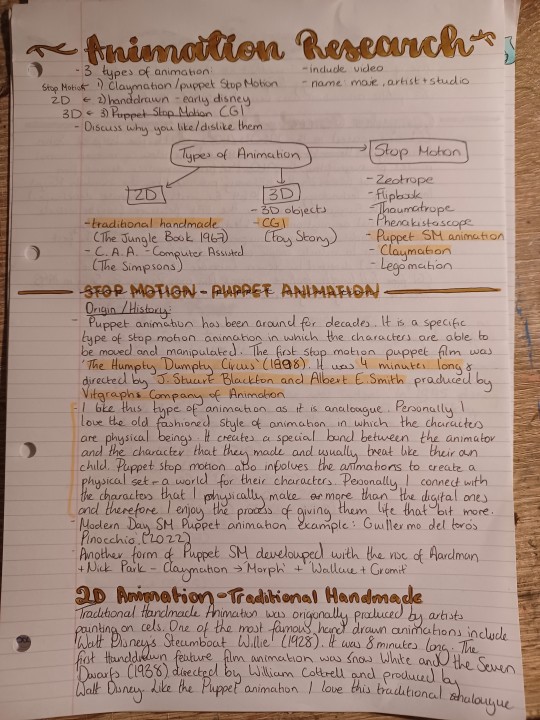
For Pupperlt stop motion I looked at the first Puppet stop motion film made in 1898 ' The Humpty Dumpty Circus ' directed by J.Stuart Blackton and Albert E. Smith produced by the Vitgraphs Company of Animation. Since then puppet animation has grown and the tradition has continued even to today with Guillero del Toros Pinocchio (2022). However another type of puppet animation arose in the late 1980's called claymation with the emergence of Aardman Animation Studios and Nick Park the creator of Wallace and Gromit. To see more of my research on claymotion see my post below :
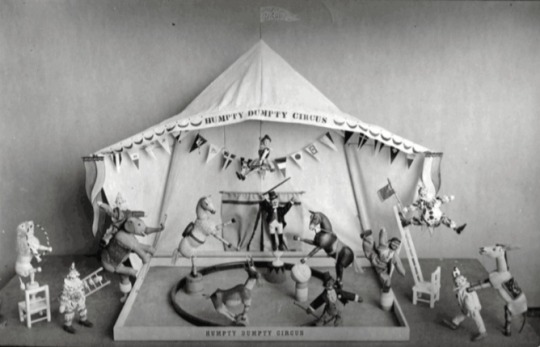

https://at.tumblr.com/k00265221/secondary-research-clay-mation-animation/w71i6kyhw3ps
I feel as though clay motion is my favourite type of animation therefore I will be doing my 4-10 second animation in that medium. I will be taking inspiration from Aardmans Morp lh series as he is what inspired my character Mr Mush . I love how clay motion allows the animator to create a figure which they get to make an original world with (set) . I love how the animator can physically hold the character. For me personally the fact that Mr Mush is a physical character makes me more emotionally attached to him. He is my plasticine child. Anorher reason why i love claymation is that the medium of stop motion is more hands on than digital.
youtube
The second type of animation I looked at was the traditional hand drawn animations typically used by Disney until the 1990s. One of the most famous clips of cel animations is Steamboat Willie produced by Disney in 1928. I love this type of animation for the same reason why I love stop motion animation - it proves that we can make animations without a heavy reliance on technology.
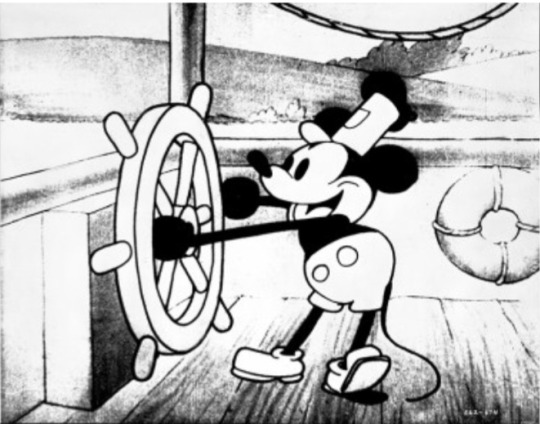
Don't get me wrong, tech advances have definitely improved animations, but sometimes it can take away the Human aspect of the process of animating and it can sometimes be too much when applied incorrectly.
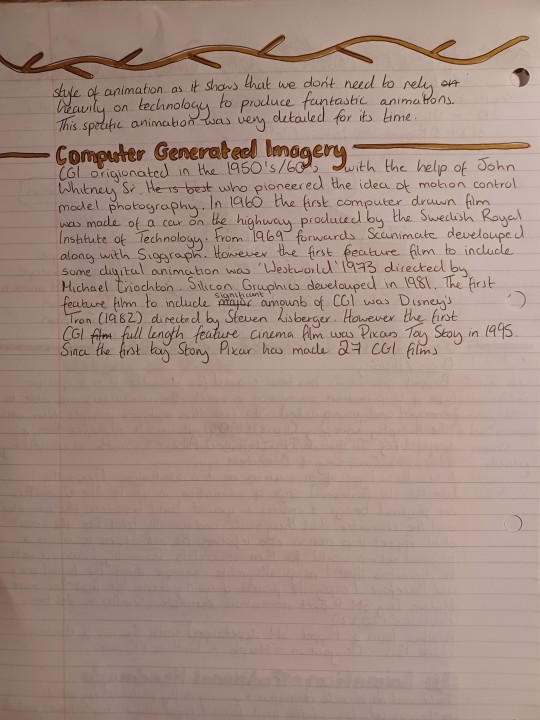

One of the greatest digital art advances is Computer Generated Images (CGI). Digital animations began to feature in small amounts in feature films from the mid to late 20th century onwards. By the 1990s pixar had developed CGI to the degree that they could make the first 3D feature length film entirely generated by a computer - Toy Story 1995.
The channel 'Insider' on YouTube has some fantastic videos on the develoupment of CGI through Pixar . Here's one to watch:
https://youtu.be/qTPKGVrFtQU
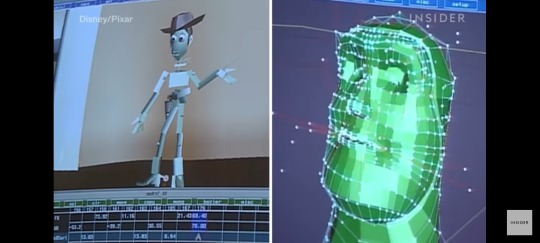
I have to say I am not the biggest fan of CGI. Personally it's just very daunting for me at this stage but I am sure that with training time and practice I could understand it and with that Grow to love it.
4 notes
·
View notes
Text
watched the first 2 eps of Rings of Power yesterday and it was basically what i was expecting - a sequence of clunky, overproduced videogame cutscenes - but despite my low expectations i was still surprised by just how bad the writing was. here’s my post bitching about it.
caveat: several years ago i attempted to read The Silmarillion but found it boring and only got about a third of the way through. i’m less interested in how faithful Rings of Power is to its source material (though i do care about faithfulness-of-vibe) and more concerned with critiquing the show on its own merits or failings as a story.
so first off: the aesthetics. i’m not gonna mince my words here, rings of power encapsulates a recent aesthetic tendency in tv and film which i despise. i’ve seen some reviews praising it as “visually stunning” and i’m like, are we watching the same show? are there some people who like this horrible modern fantasy aesthetic where nothing looks real, everything is CGI and has this oversaturated, sort of shiny quality; where even the physical costumes manage to look computer-generated and even “gritty” scenes like battlefields or a rustic tavern are uncannily sanitized? people enjoy this?
the overall shiny videogame aesthetic is compounded by some truly bizarre character design. number one is giving all the male elves a hairstyle that can only be described as “80′s corporate prepster quiff”, sometimes bordering precariously onto greasy mullet territory. each individual elf has a metric tonne of gel holding his quiff in place. apparently this is the standard for male elf beauty in the Second Age:
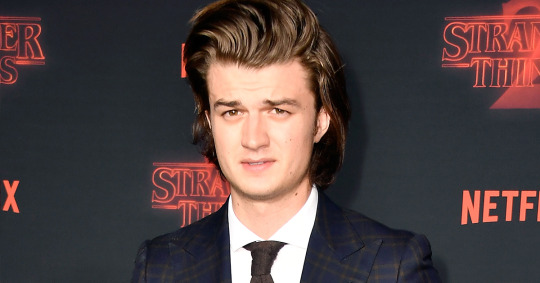
it is inherently untrustworthy and undignified hair; the only conceivable explanation is that the director wished to evoke the atmosphere of 1980s boardroom dramas and douchebag frat boys to convey that the elves of the Second Age are dumb political animals.
beyond elf hair, the costuming is not great overall. stand out sins: a general plasticky quality to the costumes (the show seems to have a proclivity for a particular mottled-metallic fabric which looks very odd; at one point galadriel is outfitted in a fully sequinned dress; the prosthetic elf ears look like fleshy plastic protruberences. all the characters are caked in highly visible makeup: the only thing that looks materially real in the whole show is galadriel’s over-highlighted pores and the stark delineation of her smokey eye.
Bonus hair issue: no beards on the dwarf women. cowards!
a few positives: there are some cool sets and landscape designs. i thought Lindon was well-conceived and pretty (although undermined by the greasy-ass elves inhabiting it) and i loved Khazad-Dum: they captured the cavernousness of the space, the sense of constant productive motion within the dwarven stronghold, the pulleys and technology and the clever ways of bringing light underground. also loved the geometric Dwarven design sensibility.
basically, the heavily CGI’d approach does in fact work quite well for landscape-establishing longshots, and the sets themselves are generally decent. i could more easily appreciate the backdrop, and be more forgiving towards the videogame aesthetic, if the characters inhabiting the world didn’t have such a consistently jarring appearance.
As for the actual substance of the show... where to begin.
First off, for a show with so much exposition, it really does a poor job of orienting the audience in the world. For a general audience with passing familiarity with the cast of LOTR and The Hobbit, there are a lot of new characters to get to grips with, and the show is bad at basic things like telling you characters’ names and how they are related to each other. Galadriel’s dead brother - who dat? Galadriel and Elrond are clearly friends/relatives but what’s the connection, when did they meet? Elrond used to be friends with Durin but again, when, how? I have the background knowledge to recognise the elf-king (i.e. the only male elf sporting appropriate hair) as Gil-Galad, but I would not know this just from watching the show. And then there are large clusters of random supporting characters where i just have no clue who these guys are.
this leads to the biggest problem, which is that not only do i not know who half the characters are, i also do not have much of a reason to care. the only character with a clearly laid-out motive is galadriel: she is haunted by her brother’s death and wants to find and defeat Sauron. ok, so far so good. but then the next thing we see is her free-soloing up an icy cliff - this apparently has something to do with finding sauron, but how? what is she looking for? why should we be invested in this wild goose chase? we don’t know and neither does her mutinous elven troupe. she is framed as a warrior girlboss, but by episode 2 she’s had a lot of action to very little purpose. and this is the one character who does have a backstory and motive - with every other character it’s like, who are you and what do you want?
another issue is tone. the problem with having an elf-centric series is that the tonal baseline of elves is heightened, serious and formal and this gets to be a drag pretty quickly. in addition, the writers of Rings of Power simply do not pull off the tolkienesque register very well. exchanges like the following are characteristic:
Elrond: After all you have endured, it is only natural to feel conflicted.
Galadriel: Conflicted? I am grateful you have not known evil as I have, but you have not seen what I have seen.
Elrond: I have seen my share.
Galadriel: You have not seen what I have seen.
the whole thing smacks of bad pastiche. the word “conflicted” is anachronistic (i did a quick ctrl+f of LOTR and i’m correct, there is not a single instance of the word “conflicted” in the text, it’s a jarringly modern usage). then the rest of the exchange is just redundent repetition and tautology, and i guess we are meant to be very impressed by the weight of galadriel’s trauma here but it’s so lamely expressed. and it’s meaningless because, actually, we don’t really have any idea of the horrors they have seen - we had one shot of galadriel wandering around a wrecked battlefield and mourning her brother, but we haven’t really witnessed her suffering beyond that, and have literally no idea what Elrond has been up to prior to the start of the story. so this exchange carries absolutely no weight. this is clearly meant to convey the high seriousness of tolkienesque dialogue but it’s amateur hour! it's just unclever, bad-sounding dialogue. this is basically the level throughout.
the writers occassionally try to lighten things up with jokes:
Medhor: ...or do you think me blind?
Arondir: I think you talk too much. And you smell of rotting leaves.
Medhor: No, I don’t!
Arondir: Yes, you do.
Ha ha ha! Ha ha ha! Ha ha ha!
Harfoots are naturally the designated comic relief race. the harfoot scenes are constantly gesturing towards mischievious frolicking but no one ever does or says anything actually funny. the harfoots are also unfortunately landed with the role of “spiritual primitives”; there are a few circle-of-life speeches, lenny henry plays some kind of hobbit shamen, it’s annoying stuff. the one positive thing i’d say is that at least with the harfoots we actually get a sense of how far in the past we are vs. LOTR; it’s basically impossible to convey the passing of millennia when your focal characters are elves because they live forever and never change, but with the harfoots we see a recognisably more primitive ancestor-culture to the hobbits, so that helps to locate the series in time.
other bad things:
- the voyage to valinor, fuck that was weird, are we supposed to infer that the elves just stand there clasping their swords in armed formation for the whole journey?
- celebrimbor... :’( he has such strong willy wonka vibes, why would they do this. i think they deliberately made him off-putting to pre-emptively thwart the celebrimbor/annatar shippers.
good things:
i like that they depict Olorin/Gandalf as deliriously disoriented by the experience of corporeal manifestation, looking forward to seeing baby’s journey of learning how to use limbs and process sensory input. i am also keen to see more dwarves.
4 notes
·
View notes
Text
I had a dream this morning that Nintendo came out with a new Legend of Zelda cartoon that was very loosely based on The Adventure of Link. In the dream, I initially thought it was the old one from The Super Mario Bros. Super Show and wasn’t paying much attention to it, but slowly I realized it wasn’t.
My dad and I got into a discussion about whether it was new or old - it had an art style like 1980′s anime. Eventually, during an action sequence, I saw a camera move that was clearly CGI and pointed it out, but with excitement: it was a perfect blend of CG animation and hand-drawn, with this really cool throwback to the kind of animation in use when the game itself was new.
The only other thing I remember was my dad seeing Horseface and calling him something weird, which I corrected for him and mentioned he was a reference to Chinese mythology.
6 notes
·
View notes
Text
What Hollywood (and Others) Need to Fix in Movies
In no particular order other than what occurs to me:
(A) Enough with the CGI. It looks as fake as it ever did, and vastly inferior to the expert practical effects that immediately preceded it (e.g. The Howling werewolf transformation). Yes, I know superhero and action films make a lot of money, but if an actor does not have the guts to do at least some of his or her own stunts, do not cast the actor in an action movie, and there have been stunt doubles at least since Yakima Canutt.
(B) Stop trying to make every villain sympathetic. Some bad people are just... bad. As far as film narratives go, antiheroes and tragic villains have their place, but so do absolutely, 100% evil characters, partly because such people do exist, and partly because part of what, in fact and fiction, forces a hero to become heroic is the enormity of a villain's actions. Imagine trying make Tommy Udo or Michael Myers or any other absolutely villainous character sympathetic: If the villain were not so clearly horrible, it would diminish what heroic characters do in confronting him.
(C) Conversely, stop making everything about politics or social issues. We live in a polarized world, and we often just want to escape. "Barbie" is a great example of this hyperpoliticization. I do not care whether you agree or disagree with the political "message". Now, I cannot see a Barbie doll or Barbie fashion without thinking of politics, so thank you very little, Greta Gerwig, for ruining a defining aspect of late 20th century pop culture.
(D) Horror films are intense mysteries, not action films or mere gore. This is coming from a huge fan of 1980's slashers, but in those movies, you did not know who the killer was until the ending, and the person who (usually) takes down the killer does not do so in action movie style. He (or more often, she) seems vulnerable, which is what makes the audience sympathize with her, and makes her victory against all odds all the more inspiring, even in the most campy context. Typically, in fact, the brash "action hero" type is outwitted by the villain before the final act.
(E) An obvious one: Too many prequels, sequels and remakes. Take some risks, because that is how all great art is made. There are so many unused (or essentially unused) literary adaptations, for instance, that this can be a font of creativity. If you must imitate, at least imitate what has not yet been on screen, but only in print.
#motion pictures#films#cinema#CGI#practical effects#villains#politicization#polarization#horror movies#mystery#originality
0 notes
Text
4: Artists of Choice - Phil Tippett
Born on 27th September 1951 in California, USA, Phil Tippett has accomplished a successful career in Hollywood in the span of over 40 years (Goodfellow 2021). His varied career in animation and VFX has gathered a collection of awards and nominations: two Academy Awards, six Academy Awards nominations, one BAFTA award, four BAFTA nominations, and two Emmys (IMDb).
Tippett's fascination with stop motion animation started in his childhood with movies such as Willis H. O'Brien's animation in King Kong (Cooper and Schoedsack 1933) and Harryhausen's animation in The Seventh Voyage of Sinbad (Juran 1958) (Aguilar 2022; IMDb). Both O'Brien and Harryhausen having notoriety of being the pioneers of stop motion animation. Growing up he would draw and sculpt objects that he would then animate - this talent lead him to graduate at the University of California with a Fine Art degree (IMDb).

Fig 1. Still from Jurassic Park (1993) Directed by Spielberg. Amblin Entertainment, Legendary Pictures, Universal Studios.
He has made a name for himself in Hollywood after his break in Star Wars: Episode V - The Empire Strikes Back (Aguilar 2022; Lucas 1980) despite working with George Lucas in the 1977's Star Wars: Episode IV - A New Hope (Goodfellow 2021). He is considered as a "visual effects alchemist" (Aguilar 2022) being responsible for some of the biggest movies to come out of the 1980s and 1990s such as Indiana Jones and the Temple of Doom (Spielberg 1984), RoboCop (Verhoeven 1987), and Jurassic Park (Spielberg 1993) to name a few (Aguilar 2022; Goodfellow 2021; IMDb). Even in the 2000s and 2010s Tippett worked in iconic cinematography in the VFX department such as the Twilight Saga from 2008-2012 (Condon 2011, 2012; Hardwicke 2008; Slade 2010; Weitz 2009).
Out of all of the works of Tippett, I will be focusing on his latest animation Mad God (2021) that was released on the Shudder platform in 2022 (Aguilar 2022). This movie seems the most relevant to what I intend to do for my project as it is all model stop motion, and not stop motion/VFX interlaced with actors.

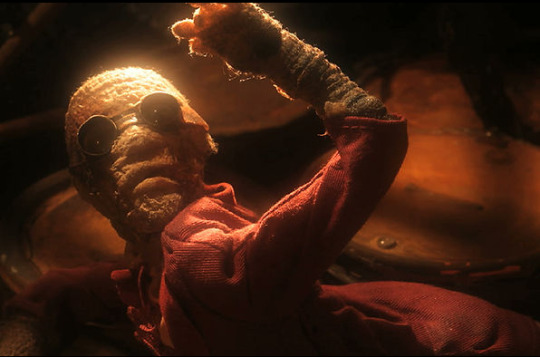
Fig 2. Stills from Mad God (2021) Directed by Phil Tippett. Tippett Studios.
Mad God is a feature stop motion animation (Cook N/A) that took 30 years in the making (Bleasdale 2021, Cook N/A). It started in 1987, a personal project for Tippett (Bleasdale 2021; Cook N/A) which animated an alternative surreal realm of monsters and mad scientists that could roam free from Tippett's mind to the screen (Cook N/A). In an interview with John Bleasdale (2021), Tippett stated how he shot the first minutes in a 35mm film, however the film was "too big in scope, and I lost my crew" (Bleasdale 2021); creating what seemed to be an indefinite hiatus on the project. This was further delayed due to stop motion and 'go motion' (Tippett's own style of animation) was being replaced by CGI in the 1990s (Bleasdale 2021). It wasn't until years later when a few animators working at Tippett Studios came across the puppets and film, and decided to dedicate their weekends into finishing the project (Cook N/A). The small group grew to 60 crew members, and a successful Kickstarter campaign helped the finishing and the premier of the film at Locarno Festival in 2021 (Bleasdale 2021; Goodfellow 2021).
During the 20 year hiatus, Tippet stated how he did his research by reading Carl Jung, the Bible, and Dante (Bleasdale 2021) into creating the themes in Mad God. It is known that it is a 'mature' film (Cook N/A) which is supported by Bleasdale's first hand experience when watching the premier at the Locarno Festival: “Mum and dad and a couple of little kids, so I said to them: ‘I wouldn’t take my kids to this.’ They got up to leave a few minutes later. The mum said I was right. And I said, ‘It gets worse.’” (Bleasdale 2021).
Aguilar, C. (2022) Phil Tippett's World in (Stop) Motion. New York Times, New York, USA.
Bleasdale, J. (2021) 'I wouldn't take my kids to see this': Star Wars' Phil Tippett on his Hellish Animation Mad God. The Guardian, London, UK. ‘I wouldn’t take my kids to this’: Star Wars’ Phil Tippett on his hellish animation Mad God | Film | The Guardian
Cook, L. (N/A) Phil Tippett's MadGod - About. Tippett Studios, USA. Phil Tippett's MadGod - ABOUT (madgodmovie.com)
Goodfellow, M. (2021) Locarno to honour ‘Star Wars’, 'RoboCop’, ‘Jurassic Park’ VFX maestro Phil Tippett. Screen International, London.
IMDb (N/A) Phil Tippett Phil Tippett - Biography - IMDb
Films Mentioned:
Indiana Jones and the Temple of Doom (1984) Directed by Spielberg. Lucas Films Ltd, Paramount Pictures.
Jurassic Park (1993) Directed by Spielberg. Amblin Entertainment, Legendary Pictures, Universal Studios.
King Kong (1933) Directed by Merian C. Cooper, Ernest B. Schoedsack. RKO Radio Pictures.
Mad God (2022) Directed by Phil Tippett. Tippett Studios.
Robocop (1987) Directed by Paul Verhoeven. Orion Pictures.
Star Wars: Episode IV - A New Hope (1977) Directed by George Lucas. Lucas Studios Ltd.
Star Wars: Episode V - The Empire Strikes Back (1980) Directed by George Lucas. Lucas Studios Ltd.
The Seventh Voyage of Sinbad (1958) Directed by Nathan H. Juran. Columbia Pictures.
Twilight (2008) Directed by Catherine Hardwicke. Aura Films, Goldcrest Films Finance, Maverick Films, Temple Hill Films.
Twilight: Breaking Dawn P.1 (2011) Directed by Bill Condon. Summit Entertainment, Sunswept Entertainment, Temple Hill Films.
Twilight: Breaking Dawn P.2 (2012) Directed by Bill Condon. Summit Entertainment, Sunswept Entertainment, Temple Hill Films.
Twilight: Eclipse (2010) Directed by David Slade. Summit Entertainment.
Twilight: New Moon (2009) Directed by Chris Weitz. Maverick Films, Sunswept Entertainment, Temple Hill Films.
0 notes
Text

#HARPERSMOVIECOLLECTION
2023
www.tumblr.com/theharpermovieblog
I re-watched The Never Ending Story (1984)
Let's revisit this beautifully made and fantastical story full of childhood trauma for any kid who grew up in the 1980'scand 90's
A young bullied boy finds solace and connection in a story book about a magical land.
Director Wolfgang Peterson has made some memorable movies. Air Force One comes to mind, because it's right down the line of mainstream perfection. Peterson's best movie is probably Das Boot, which one of these days I'll get around to talking about on here. But, the Wolfgang Peterson film we all know, and which probably had the most impact on many of us is, The Never Ending Story.
This movie is full of wild special effects and puppets and epic imagery that naturally stirs the imagination. It's a story, I believe originally a German story, which has a love of books and fantasy and adventure. Desperate to impart the idea that imagination is just as important as every other aspect of life.
It's also a children's film, which never turns a blind eye to the darkness, danger and evil of life.
From a Production standpoint, The Never Ending Story is still a mind blowingly beautiful film. It's all amazingly put together. Not to sound like an old person, but they don't make em' like this anymore, and that's a real shame.
Usually I make it clear that I think CGI is ok in small doses and when properly and sparingly used, and it is. But, this is a movie which made me outright loathe CGI for it's runtime. Everything's handcrafted and there's rear projection used, Matte Paintings and hazy lights and smoke machines and costumes and makeup and puppets.....it's so beautiful and so much more weight is felt on screen.
From a story standpoint, it's the simplicity put forth that captures the audience's attention and also serves to fail us in a few places. We can all relate to being a child, being picked on, feeling life coming down on us. We can all admire the heroes journey and the desire for an epic adventure. It connects deeply because it's simply relatable. But, not all of it is perfectly written or paced correctly. The most devastating moment in this film has always been the death of Atreyu's horse, but I never realized that there is almost no relationship built between Atreyu and the horse before this moment. It's still a sad moment, but only because we as human beings naturally don't want to see a horrible fate befall any animal, not because the film earns this death. It's little things like that which fall flat but don't by any means ruin the experience.
This is still great and still one of those "kids" movies which is elevated by its sheer magnificence.
0 notes